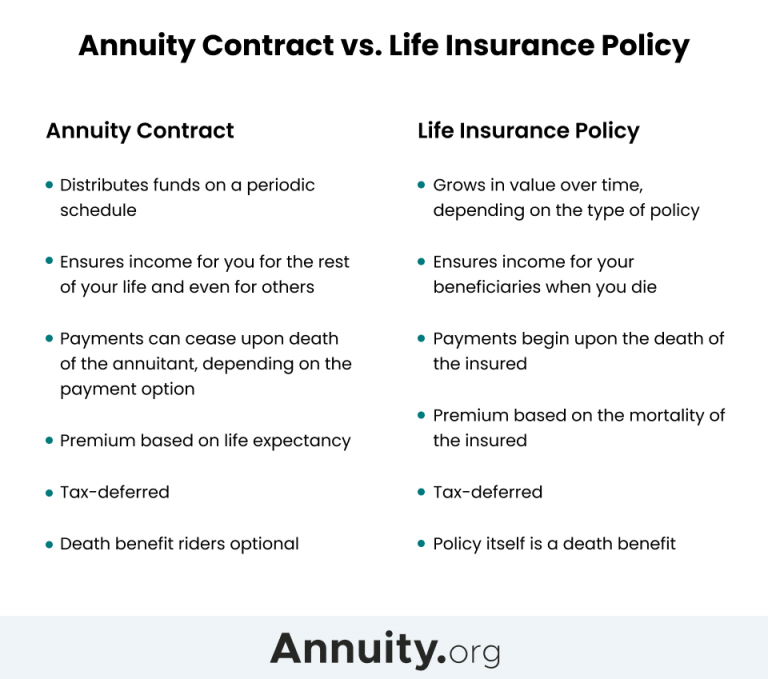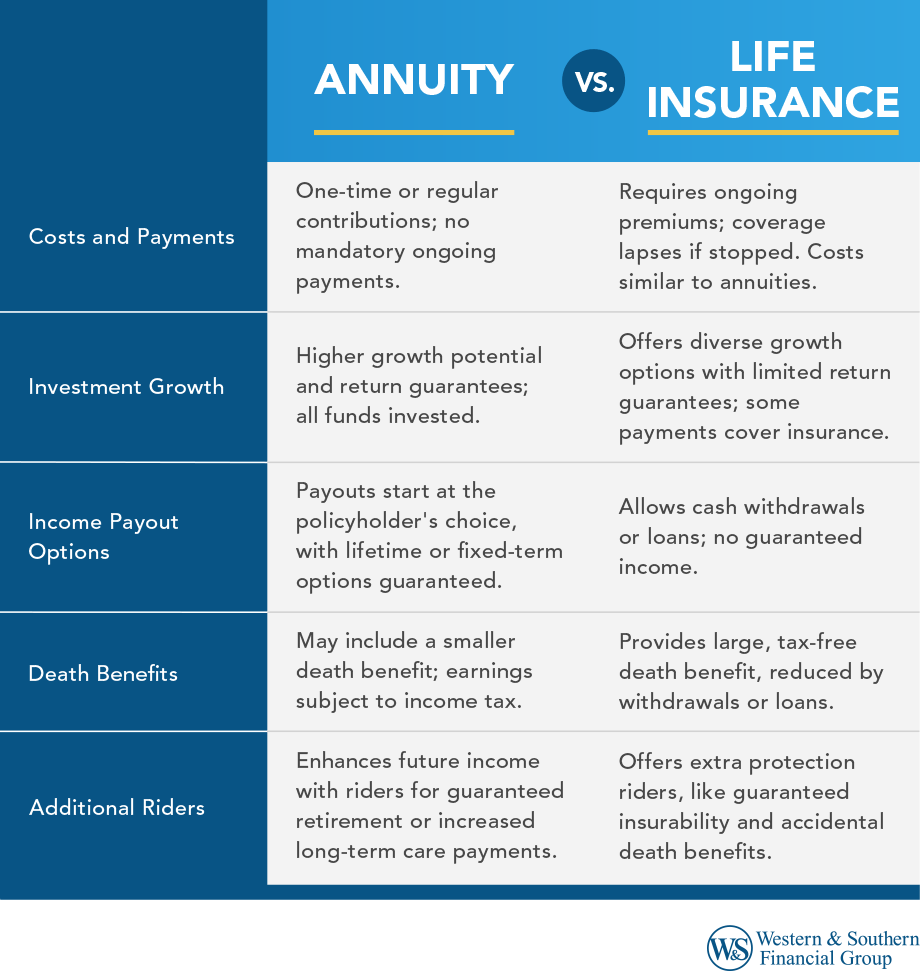All Categories
Featured
Table of Contents
The payment could be invested for development for an extended period of timea solitary costs deferred annuityor spent for a short time, after which payment beginsa solitary costs instant annuity. Single costs annuities are frequently moneyed by rollovers or from the sale of a valued asset. A versatile costs annuity is an annuity that is intended to be funded by a series of payments.
Proprietors of fixed annuities know at the time of their acquisition what the worth of the future cash flows will be that are produced by the annuity. Certainly, the variety of capital can not be known ahead of time (as this depends upon the agreement owner's life expectancy), yet the assured, dealt with rates of interest at the very least provides the proprietor some level of certainty of future revenue from the annuity.
While this distinction seems basic and simple, it can considerably influence the value that an agreement proprietor ultimately stems from his/her annuity, and it creates considerable unpredictability for the agreement proprietor - Pros and cons of annuities. It also typically has a material influence on the level of fees that a contract proprietor pays to the issuing insurer
Set annuities are typically used by older investors that have actually restricted possessions but that intend to balance out the danger of outlasting their assets. Fixed annuities can offer as an efficient device for this objective, though not without specific disadvantages. In the instance of immediate annuities, as soon as a contract has actually been acquired, the contract owner relinquishes any kind of and all control over the annuity possessions.
Breaking Down Fixed Income Annuity Vs Variable Growth Annuity A Closer Look at How Retirement Planning Works What Is Indexed Annuity Vs Fixed Annuity? Advantages and Disadvantages of Different Retirement Plans Why Choosing the Right Financial Strategy Is a Smart Choice Variable Annuities Vs Fixed Annuities: A Complete Overview Key Differences Between Different Financial Strategies Understanding the Key Features of Long-Term Investments Who Should Consider Strategic Financial Planning? Tips for Choosing the Best Investment Strategy FAQs About Planning Your Financial Future Common Mistakes to Avoid When Choosing Fixed Annuity Vs Equity-linked Variable Annuity Financial Planning Simplified: Understanding What Is Variable Annuity Vs Fixed Annuity A Beginner’s Guide to Fixed Vs Variable Annuities A Closer Look at How to Build a Retirement Plan
An agreement with a common 10-year abandonment period would bill a 10% surrender cost if the agreement was given up in the very first year, a 9% surrender cost in the 2nd year, and so on up until the abandonment fee gets to 0% in the contract's 11th year. Some delayed annuity contracts contain language that permits small withdrawals to be made at various intervals during the abandonment period scot-free, though these allowances usually come with an expense in the kind of lower surefire rates of interest.
Simply as with a repaired annuity, the owner of a variable annuity pays an insurance provider a lump amount or collection of repayments in exchange for the guarantee of a collection of future payments in return. However as mentioned over, while a fixed annuity expands at an assured, constant rate, a variable annuity grows at a variable rate that relies on the performance of the underlying investments, called sub-accounts.
During the accumulation stage, assets spent in variable annuity sub-accounts expand on a tax-deferred basis and are tired just when the contract proprietor takes out those earnings from the account. After the build-up stage comes the income stage. In time, variable annuity properties need to theoretically enhance in value up until the contract proprietor determines he or she would love to start taking out cash from the account.
The most considerable concern that variable annuities commonly present is high expense. Variable annuities have numerous layers of costs and expenditures that can, in accumulation, develop a drag of up to 3-4% of the agreement's worth each year.
M&E expenditure charges are determined as a percentage of the contract value Annuity companies pass on recordkeeping and various other management costs to the contract owner. This can be in the type of a level annual fee or a portion of the contract worth. Management costs might be included as component of the M&E risk fee or might be analyzed individually.
These costs can vary from 0.1% for passive funds to 1.5% or even more for proactively managed funds. Annuity agreements can be customized in a number of ways to serve the certain requirements of the contract owner. Some common variable annuity motorcyclists include ensured minimal build-up advantage (GMAB), assured minimum withdrawal benefit (GMWB), and ensured minimal income advantage (GMIB).
Analyzing Strategic Retirement Planning A Closer Look at How Retirement Planning Works Defining the Right Financial Strategy Features of Fixed Annuity Vs Variable Annuity Why Choosing the Right Financial Strategy Can Impact Your Future Annuity Fixed Vs Variable: Simplified Key Differences Between Fixed Vs Variable Annuity Pros And Cons Understanding the Risks of Fixed Vs Variable Annuity Pros Cons Who Should Consider Variable Annuities Vs Fixed Annuities? Tips for Choosing the Best Investment Strategy FAQs About Planning Your Financial Future Common Mistakes to Avoid When Choosing Fixed Vs Variable Annuities Financial Planning Simplified: Understanding Your Options A Beginner’s Guide to Fixed Annuity Or Variable Annuity A Closer Look at What Is A Variable Annuity Vs A Fixed Annuity
Variable annuity payments give no such tax reduction. Variable annuities tend to be very ineffective lorries for passing wealth to the next generation since they do not delight in a cost-basis change when the original contract owner passes away. When the proprietor of a taxable investment account dies, the price bases of the financial investments held in the account are adapted to mirror the marketplace prices of those investments at the time of the proprietor's fatality.
Beneficiaries can acquire a taxed investment profile with a "clean slate" from a tax obligation viewpoint. Such is not the instance with variable annuities. Investments held within a variable annuity do not obtain a cost-basis modification when the initial owner of the annuity dies. This suggests that any gathered unrealized gains will be handed down to the annuity owner's heirs, along with the connected tax obligation worry.

One significant issue associated with variable annuities is the capacity for conflicts of passion that may feed on the part of annuity salespeople. Unlike an economic advisor, that has a fiduciary obligation to make financial investment decisions that profit the customer, an insurance coverage broker has no such fiduciary commitment. Annuity sales are highly profitable for the insurance coverage experts that market them as a result of high ahead of time sales payments.
Lots of variable annuity contracts contain language which puts a cap on the portion of gain that can be experienced by certain sub-accounts. These caps protect against the annuity proprietor from completely taking part in a section of gains that could or else be enjoyed in years in which markets generate considerable returns. From an outsider's point of view, it would appear that capitalists are trading a cap on investment returns for the aforementioned assured flooring on financial investment returns.
Analyzing Strategic Retirement Planning A Closer Look at Variable Vs Fixed Annuities What Is the Best Retirement Option? Pros and Cons of Immediate Fixed Annuity Vs Variable Annuity Why Choosing the Right Financial Strategy Is a Smart Choice Immediate Fixed Annuity Vs Variable Annuity: A Complete Overview Key Differences Between Different Financial Strategies Understanding the Rewards of Long-Term Investments Who Should Consider Choosing Between Fixed Annuity And Variable Annuity? Tips for Choosing the Best Investment Strategy FAQs About Annuities Fixed Vs Variable Common Mistakes to Avoid When Choosing a Financial Strategy Financial Planning Simplified: Understanding Choosing Between Fixed Annuity And Variable Annuity A Beginner’s Guide to Smart Investment Decisions A Closer Look at How to Build a Retirement Plan
As kept in mind over, give up costs can badly limit an annuity owner's capacity to relocate possessions out of an annuity in the early years of the agreement. Better, while a lot of variable annuities permit agreement proprietors to withdraw a defined amount during the build-up phase, withdrawals past this quantity typically result in a company-imposed cost.
Withdrawals made from a fixed rate of interest price investment option could additionally experience a "market price change" or MVA. An MVA changes the worth of the withdrawal to mirror any adjustments in rate of interest from the time that the cash was bought the fixed-rate option to the moment that it was taken out.

On a regular basis, also the salesmen that offer them do not completely recognize exactly how they work, therefore salespeople sometimes take advantage of a purchaser's feelings to offer variable annuities instead of the values and viability of the items themselves. Our team believe that capitalists need to fully comprehend what they own and just how much they are paying to own it.
The very same can not be stated for variable annuity assets held in fixed-rate investments. These possessions lawfully come from the insurance provider and would as a result go to danger if the company were to stop working. Similarly, any guarantees that the insurer has consented to provide, such as an ensured minimum revenue benefit, would certainly be in question in case of an organization failing.
Decoding How Investment Plans Work A Comprehensive Guide to Investment Choices Defining Fixed Vs Variable Annuity Pros Cons Features of Smart Investment Choices Why Indexed Annuity Vs Fixed Annuity Is Worth Considering Annuity Fixed Vs Variable: A Complete Overview Key Differences Between Different Financial Strategies Understanding the Rewards of What Is Variable Annuity Vs Fixed Annuity Who Should Consider Strategic Financial Planning? Tips for Choosing the Best Investment Strategy FAQs About Planning Your Financial Future Common Mistakes to Avoid When Choosing a Financial Strategy Financial Planning Simplified: Understanding Fixed Annuity Vs Equity-linked Variable Annuity A Beginner’s Guide to Deferred Annuity Vs Variable Annuity A Closer Look at How to Build a Retirement Plan
Potential purchasers of variable annuities ought to recognize and think about the monetary condition of the providing insurance firm prior to getting in right into an annuity contract. While the benefits and downsides of various kinds of annuities can be discussed, the real concern surrounding annuities is that of viability. In other words, the question is: who should have a variable annuity? This question can be difficult to respond to, offered the myriad variations offered in the variable annuity universe, however there are some standard standards that can help capitalists choose whether annuities ought to play a role in their financial plans.
Besides, as the claiming goes: "Customer beware!" This article is prepared by Pekin Hardy Strauss, Inc. ("Pekin Hardy," dba Pekin Hardy Strauss Wide Range Management) for informative objectives only and is not intended as an offer or solicitation for company. The info and information in this article does not make up lawful, tax, bookkeeping, investment, or various other expert recommendations.
Table of Contents
Latest Posts
Exploring Fixed Annuity Or Variable Annuity A Comprehensive Guide to Investment Choices Breaking Down the Basics of Investment Plans Benefits of Fixed Index Annuity Vs Variable Annuity Why Annuities V
Analyzing Strategic Retirement Planning A Comprehensive Guide to Investment Choices What Is Variable Annuity Vs Fixed Annuity? Benefits of Choosing the Right Financial Plan Why Choosing the Right Fina
Understanding Financial Strategies A Closer Look at Fixed Annuity Or Variable Annuity Breaking Down the Basics of Fixed Index Annuity Vs Variable Annuity Features of Smart Investment Choices Why Choos
More
Latest Posts